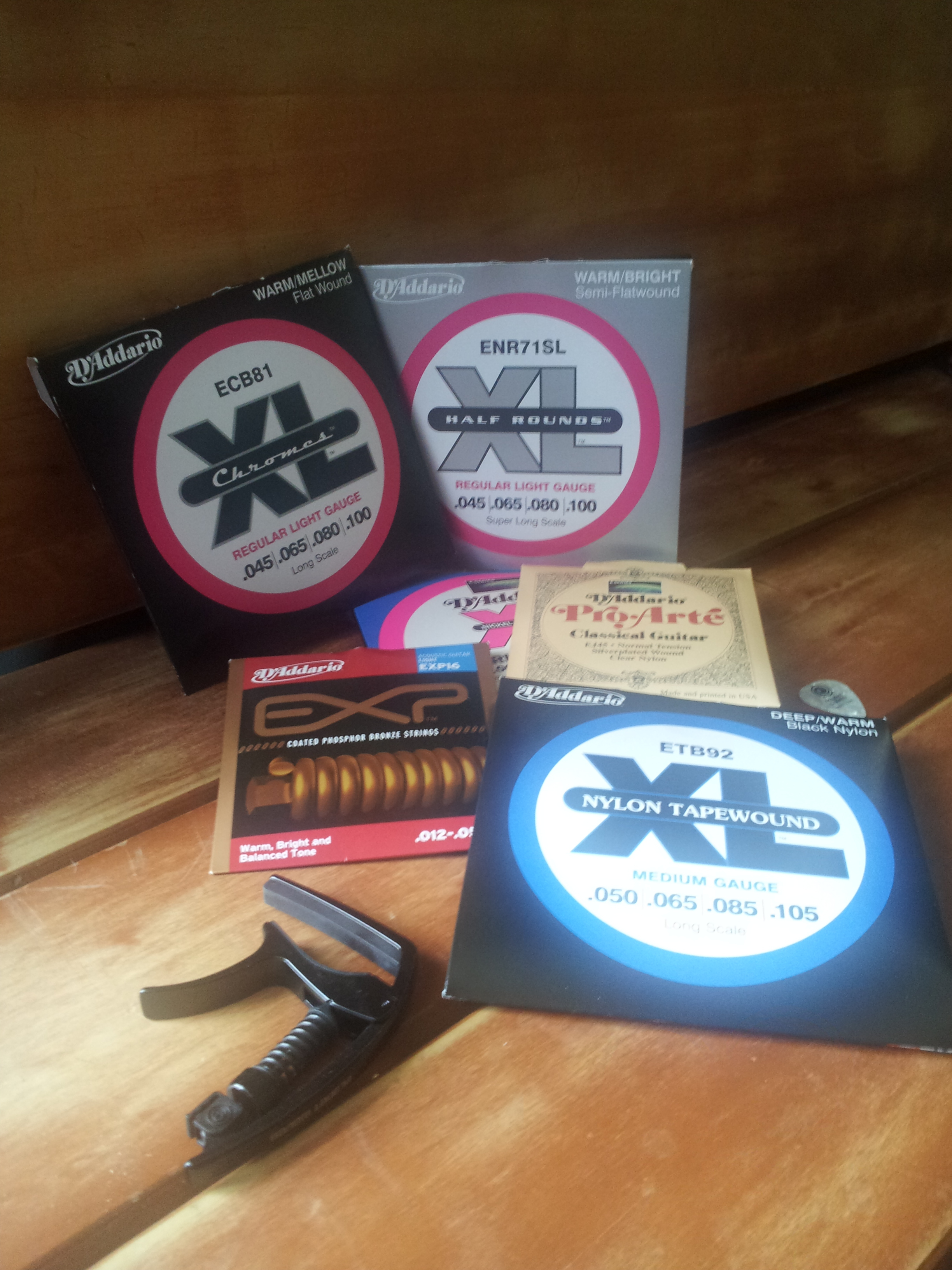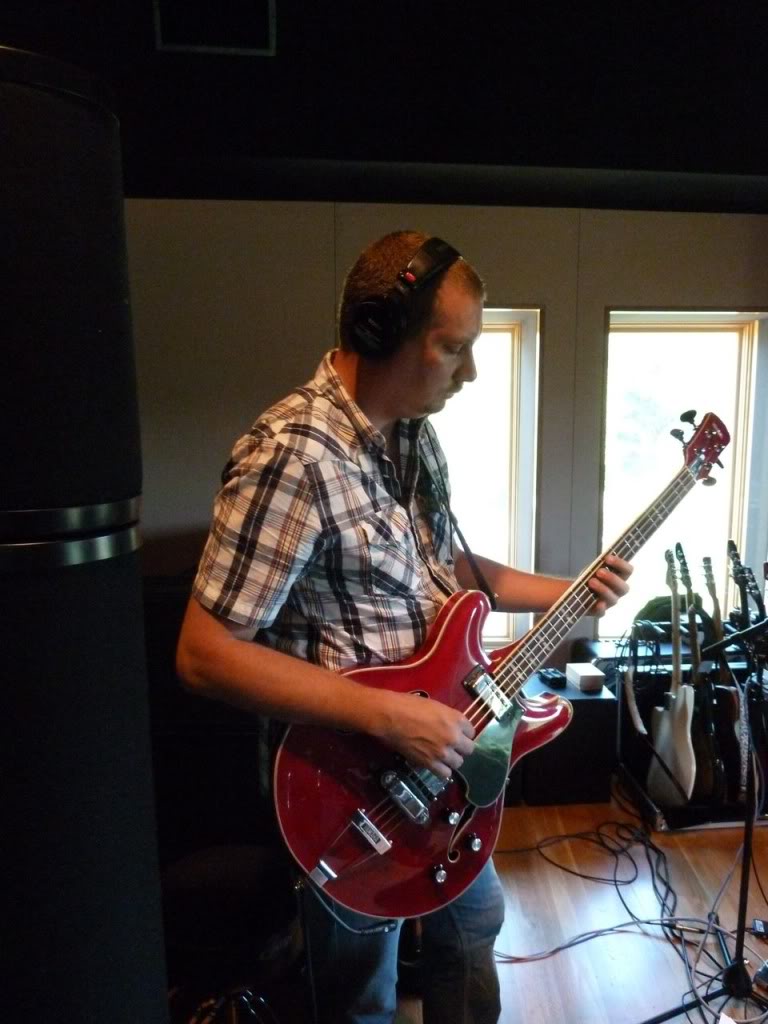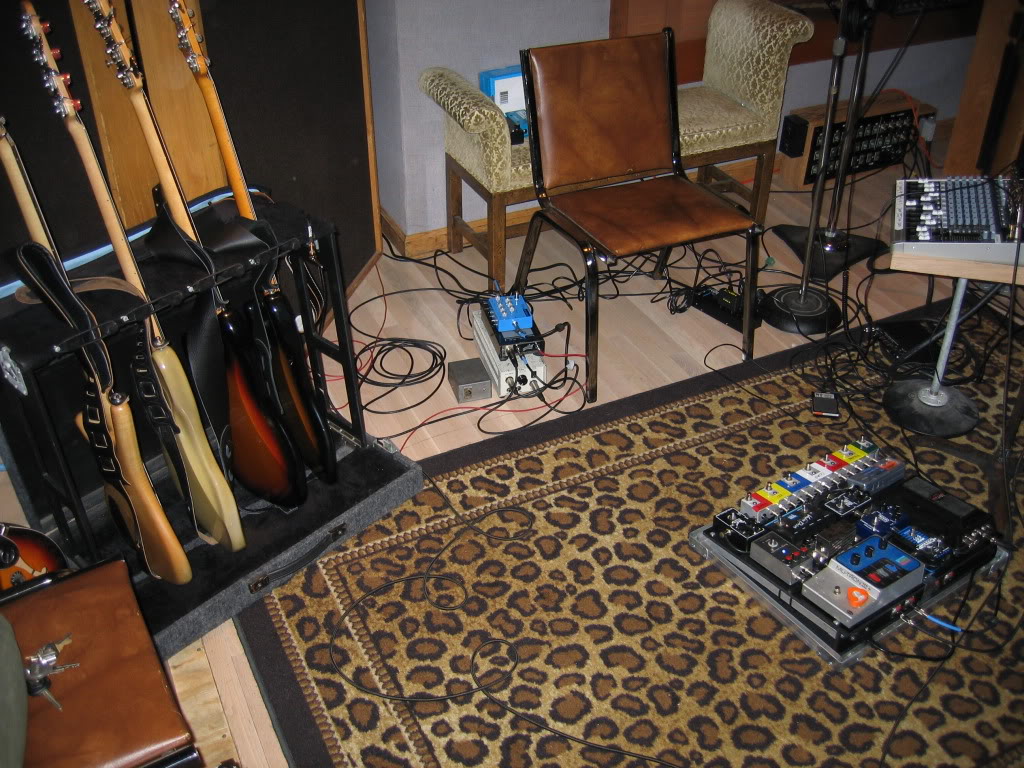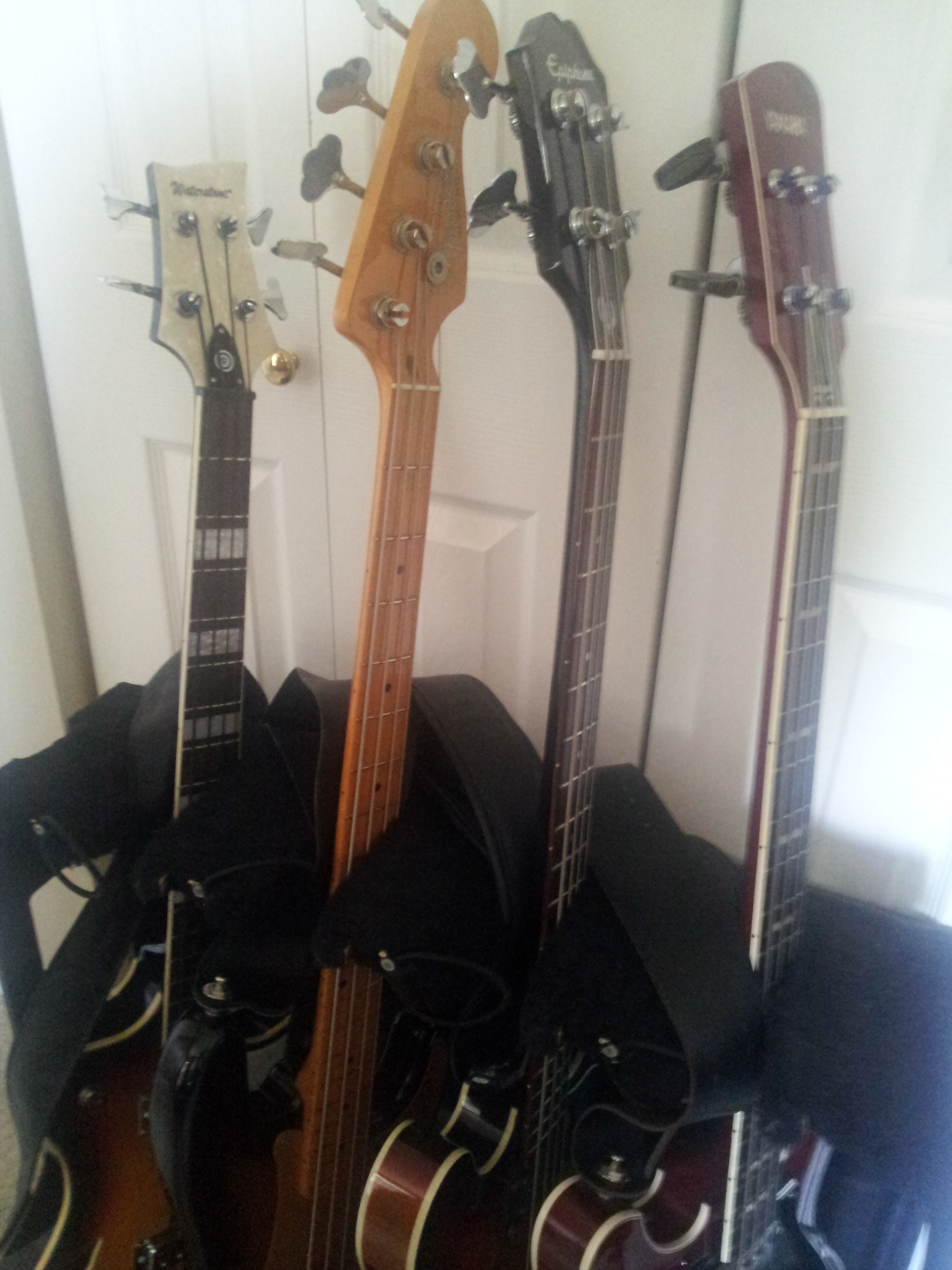-Different Songs, Different Strings!
 Friday, August 2, 2013 at 9:25AM
Friday, August 2, 2013 at 9:25AM Live and in the studio- using a variety of different string types can really open new tonal and creative possibilities.

For years and years, all I used as a bass player was roundwound strings. Roundwounds are great - they offer the broadest range of tone (arguably), sit well in mixes and are the most familiar feeling string for most of today's players. I never really thought much about string types until I started playing more sessions and would inevitably get asked if I had a P-Bass strung with flats with me. This led me down the road of researching what Jamerson, McCartney, Entwistle and all the iconic bassists known for distinctive tone used...
These days, I cannot imagine not having different string choices. While roundwounds probably serve my needs about 70% of the time, flatwounds and 'tapes' have become indispensable to me! I don't know how I lasted as long as I did without broadening my string horizons. If you are like I was, and are still clinging to the same type of string you started on, you owe it to yourself to try something different. There is a whole landscape of tones and textures you are missing out on!
Flatwounds, particularly D'Addario Chromes, have become my second favorite string and a studio necessity. Flats impart that classic 'Motown' vibe with deep bass, thumpy attack and smooth transitions between notes. They are actually more fun to play with their smooth texture and inspire you to play differently. With their subdued highs, as compared to roundwounds, flatwounds lend themselves to sit in a mix plucking on some flats on an old Yamaha very well without drawing unwanted attention. (read: Get away with playing more complex bass lines without overpowering the song!) ;-) D'Addario Chromes have a little bit brighter overall sound so you get more flexibility compared to some other flats as well. From overdriven rock to muted pick playing (Beach Boys-esque) to deep reggae dub - flatwounds deliver in a BIG way!
plucking on some flats on an old Yamaha very well without drawing unwanted attention. (read: Get away with playing more complex bass lines without overpowering the song!) ;-) D'Addario Chromes have a little bit brighter overall sound so you get more flexibility compared to some other flats as well. From overdriven rock to muted pick playing (Beach Boys-esque) to deep reggae dub - flatwounds deliver in a BIG way!
I was turned onto Nylon Tapewounds a few years ago by a colleague. Tapes have a roundwound-like tone, but with their flat nylon wrappings they prompt you to play them like a flat. With less sustain than a roundwound, they do sound unique though! Tapewounds are particularly well suited to hollowbody instruments and acoustic bass guitars. I have a neat short-scale hollowbody Hofner-like bass that I cannot imagine using any other string on. It was a pretty so-so sounding instrument until I put a set of D'Addario Nylon Tapewounds on it.
I'm fortunate to have a pretty extensive stable of instruments. Some that I tour with and a bunch that are more studio tools. Lately, I've been trying out D'Addario's EXP Coated Bass Strings. I have a handful of basses that only get used a few times a year & I like the strings to still sound fresh when I finally pick one of them up. The EXP strings still sound new on a couple of basses that I strung up a year ago! A nice side-benefit of the EXP's is that they are marginally less bright as a freshly strung roundwound, more like a brand new string that  I like to keep options near-at-hand while workinghas been played a few hours (in other words, perfect!)... D'Adddario's proprietary coating process also makes for a string that feels nearly identical to a traditional roundwound without the "coated feel" and fraying that occurs with some other brands. If you have acidic skin and experience early corrosion problems, coated strings are worth a try! They may be more expensive than uncoated strings, but with a triple lifespan you might actualy save a few bucks!
I like to keep options near-at-hand while workinghas been played a few hours (in other words, perfect!)... D'Adddario's proprietary coating process also makes for a string that feels nearly identical to a traditional roundwound without the "coated feel" and fraying that occurs with some other brands. If you have acidic skin and experience early corrosion problems, coated strings are worth a try! They may be more expensive than uncoated strings, but with a triple lifespan you might actualy save a few bucks!
Don't be like me & play the same kind of string for over a decade before you expand your palette... Go try a set of flats, tapes, halfrounds or coated strings today!
 A spice rack featuring Tapes, Rounds, Halfrounds and Flats. Spicy!
A spice rack featuring Tapes, Rounds, Halfrounds and Flats. Spicy!

 Justin Oscar Cary | Comments Off |
Justin Oscar Cary | Comments Off |